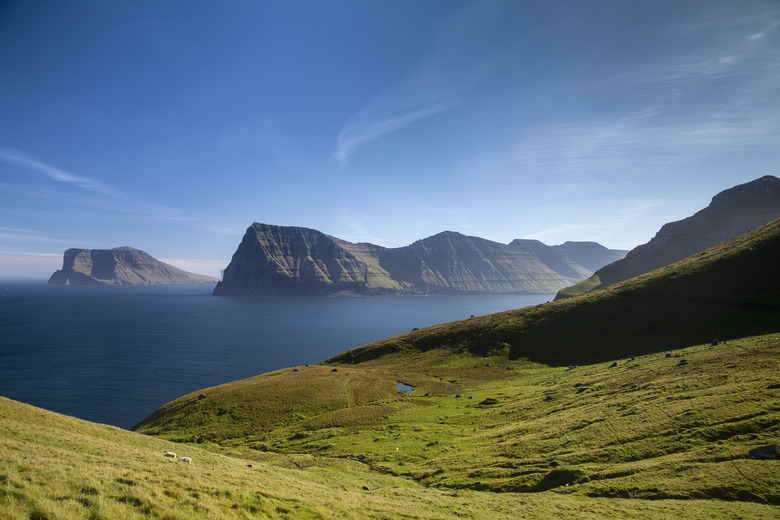What Bodies Of Water Are Found In The Tundra?
Nearly 20 percent of the Earth's surface is considered to be part of the northern tundra, a vast, cold region that circumnavigates the North Pole at latitudes 55 degrees to 70 degrees North. In addition to the Arctic Ocean, several major bodies of water lay at the top of the world in our planet's northern-most biome.
Asian Waters
Asian Waters
Asia's northern waters account for a large part of the continent's transportation and trade industry, despite the cold weather and dangerous environments these seas often produce. The Kara Sea sits to the north of Siberia and is separated from the Barents Sea of Europe to the west by the Kara Strait and Novaya Zemlya. This relatively small body of water remains frozen up to nine months each year, unlike the warmer waters of northern Asia to the east. The relatively shallow Laptev Sea, originally named the Nordenskjöld Sea, also remains frozen most of the year, as does the East Siberian Sea except in the months August and September. The Chukchi Sea was named for the Russian people who live along the water's western shore, and with the Bering Strait and Sea, it also separates Russia from Alaska.
European Waters
European Waters
Greenland and Iceland are separated by the Denmark Straight, a navigational passage more than 300 miles long that carries icebergs south to the Atlantic Ocean. The Greenland Sea sits to its north, which expands east between the Arctic and Atlantic Oceans before blending with the Norwegian and Barents Sea. The Norwegian Current, a branch of the Gulf Stream, pushes warm water into the Norwegian Sea to make it one of the most productive fishing grounds on Earth, and the North Atlantic drift extends into the Barents Sea to keep these areas ice-free for most of the year.
North American Waters
North American Waters
The Beaufort Sea sits between Barrow, Alaska, and the southwestern edge of Prince Patrick Island and northern coast of Canada's Northwest Territory. The northern and central areas of this isolated body of water remain frozen year-round and are virtually untouched by humans. To its east sit the Amudsen Gulf and McClure Strait. Further east, across the arctic territory of Nunavut, is the Hudson Bay area, which is comprised of Foxe Basin, leading to the Arctic Ocean; Hudson Straight, leading to the Atlantic Ocean and the second-largest bay on Earth. Hudson Bay is fairly shallow, and in its southeastern portion there are several islands and the much smaller James Bay. To the area's north lies Baffin Bay and Davis Straight, and to the east is the Labrador Sea, bodies of water separating Canada from Greenland.
Cite This Article
MLA
Sherrard, Melissa. "What Bodies Of Water Are Found In The Tundra?" sciencing.com, https://www.sciencing.com/bodies-water-found-tundra-7183633/. 22 November 2019.
APA
Sherrard, Melissa. (2019, November 22). What Bodies Of Water Are Found In The Tundra?. sciencing.com. Retrieved from https://www.sciencing.com/bodies-water-found-tundra-7183633/
Chicago
Sherrard, Melissa. What Bodies Of Water Are Found In The Tundra? last modified March 24, 2022. https://www.sciencing.com/bodies-water-found-tundra-7183633/
